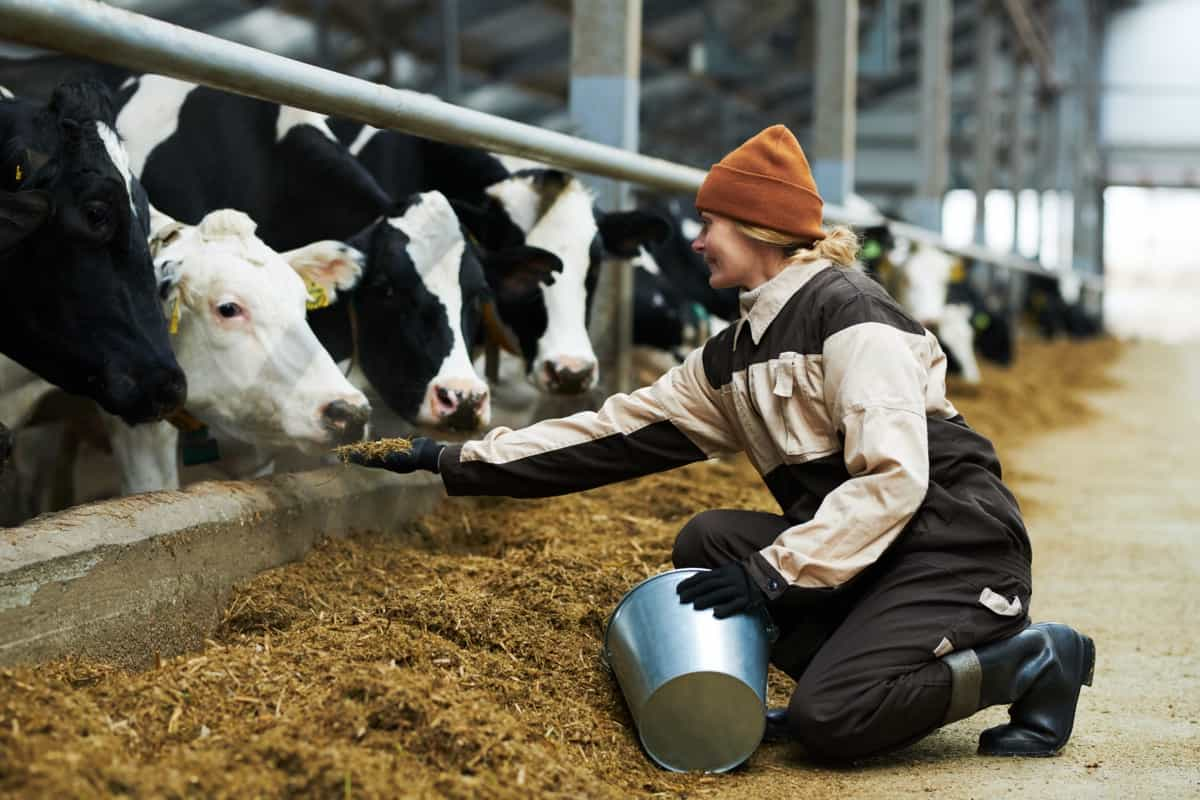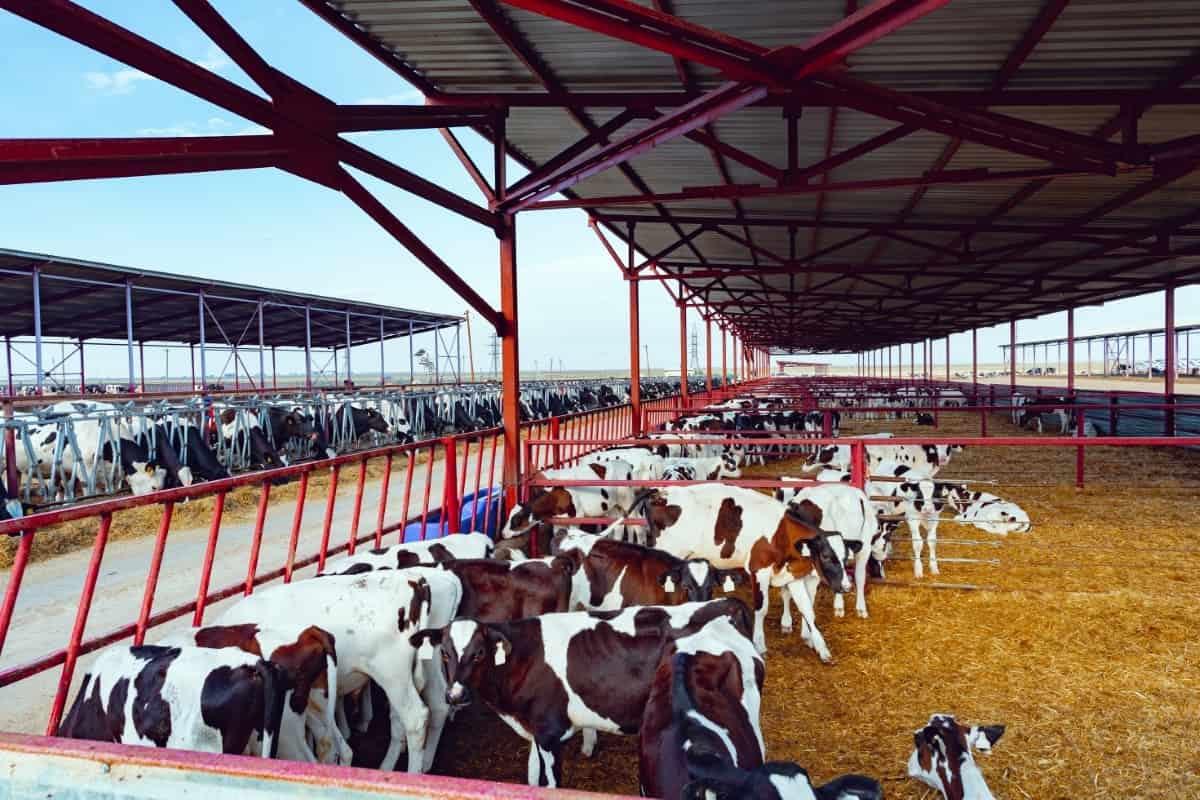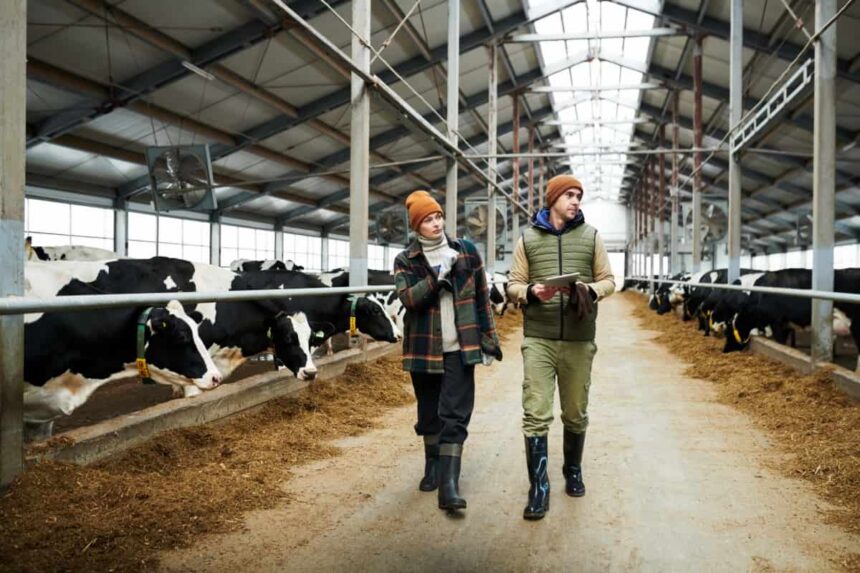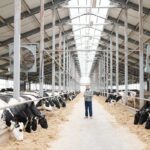Hello livestock owners, are you irritated by flies arouns your cows or cattle? We are here with a great inforamtion on how to control flies in cattle naturally with 15 proven stratagies. The presence of flies is a chronic problem for cattle ranchers because they make their animals uncomfortable and have the potential to promote the spread of diseases. If you want to keep your herd healthy and productive, it is absolutely necessary to acquire the knowledge necessary to control flies in cattle using natural methods. Despite the fact that chemical remedies could appear to be a quick remedy, they frequently come with concerns that are not only to the environment but also to the animals concerned. With the help of this guide, you will learn about fifteen natural and efficient methods that can assist you in controlling fly populations around your cattle. The use of these measures, which range from biological controls to environmental changes, guarantees a well-balanced and environmentally responsible approach to pest management. It is possible to create a better environment for your livestock while decreasing the amount of damage done to the ecosystem if you concentrate on teaching yourself how to organically reduce flies in cattle.
15 Practical Ways to Reduce Flies Around Cattle Naturally
1. Using Predatory Insects to Manage Fly Populations Naturally
When it comes to naturally controlling flies in cattle, one of the most successful methods is to introduce predatory insects into the environment of your farm. Parasitic wasps, for instance, are a small but powerful ally that preys on fly larvae before they reach adulthood. This species of wasp lays its eggs inside the pupae of the fly, so preventing the adult fly from emerging.

It is possible for farmers to acquire these helpful insects through agricultural suppliers or through the internet, and then release them in close proximity to places where waste collects. The incorporation of this natural method allows you to address the issue of how to control flies in cattle in a natural manner without resorting to the use of dangerous chemicals. Additionally, by preserving a variety of habitats on your farm, you are encouraging the presence of other predators, such as birds and beetles, which will also consume flies and the larvae that they produce.
| Aspect | Details |
|---|---|
| Predatory Insect Used | Parasitic wasps |
| How They Work | Lay eggs inside fly pupae, preventing adult flies from emerging |
| Additional Benefits | Encourages biodiversity by attracting other natural predators like birds |
2. Creating Fly Traps with Household Ingredients for Cattle Farms
In the process of determining how to organically reduce flies in cattle, homemade fly traps are a solution that is both cost-effective and kind to the environment. Using a straightforward combination of apple cider vinegar, sugar, and water, it is possible to entice flies into jars or bottles, where they can then lodge themselves.
There is also the possibility of use fermented molasses in conjunction with dish soap. The sweet aroma attracts flies, while the soap decreases surface tension, so preventing them from escaping. By strategically positioning these traps around feeding places and drinking troughs, you may drastically minimize the number of flies that are present. Not only does this method help to ensure that cattle are comfortable, but it also helps to minimize the use of synthetic pesticides, which could be harmful to the environment.
| Ingredient Used | Role in Fly Trap |
|---|---|
| Apple Cider Vinegar | Attracts flies with its scent |
| Sugar | Enhances the attraction by adding sweetness |
| Dish Soap | Breaks surface tension to trap flies effectively |
3. Implementing Proper Manure Management Techniques
Managing manure in an efficient manner is an essential component in the natural management of fly populations in cattle because it plays a significant part in reducing the number of breeding places for flies. The life cycle of flies is disrupted when manure is removed and composted on a regular basis because flies thrive in surroundings that are warm and moist.
The act of composting causes organic material to become heated, which results in the death of fly larvae and eggs. Further discouraging fly reproduction is the practice of spreading dry bedding materials such as straw or sawdust over manure piles. These items absorb excess moisture and help prevent fly reproduction. Farmers are able to make substantial progress in successfully managing fly populations without resorting to the use of artificial repellents provided they place a high priority on cleanliness and organization.
| Technique | Purpose |
|---|---|
| Regular Manure Removal | Disrupts fly lifecycle by eliminating breeding grounds |
| Composting | Heats organic material to kill larvae and eggs |
| Dry Bedding Materials | Absorbs moisture and deters fly reproduction |
4. Growing Plants That Repel Flies Around Livestock Areas
There are several plants that have natural qualities that repel flies, which adds another layer to the natural methods that can be used to take control of flies in cattle. Marigolds include components that are known to work as insecticides, herbs such as lavender, mint, and basil generate strong odors that prevent flies, and marigolds have this same compound.
A protective barrier against fly infestations can be created by planting these species in the vicinity of barns, pastures, and feeding stations if they are planted. Not only do these plants fulfill a functional requirement, but they also contribute to the visual appeal of your farm with their presence. To achieve the best possible effects, it is recommended to mix plant-based repellents with other natural ways in order to enhance their power.
| Plant Name | Repellent Property |
|---|---|
| Lavender | Emits a strong scent that confuses and repels flies |
| Mint | Produces odors disliked by flies |
| Marigold | Contains compounds acting as natural insecticides |
5. Utilizing Natural Oils for Fly Deterrence Among Cattle
The use of essential oils as a viable and risk-free option for the management of pests, particularly flies, has acquired significant popularity. When discussing natural methods for controlling flies in cattle, oils such as eucalyptus, citronella, and tea tree oil stand out as particularly effective pesticides due to their powerful repelling properties.
Prepare these oils by diluting them with water and then spraying them lightly into the coats of cattle or the surfaces around them. As a result of the powerful perfume, flies are confused and repelled, which provides your animals with some brief comfort. Take care to perform a patch test on a small area initially to check that there is no adverse response, and reapply the product as required because exposure to the sun and rain can reduce its effectiveness.
| Oil Type | Function |
|---|---|
| Eucalyptus Oil | Repels flies with its strong aroma |
| Citronella Oil | Acts as a natural deterrent for flying insects |
| Tea Tree Oil | Provides protection against biting flies |
6. Encouraging Biodiversity Through Rotational Grazing Practices
In addition to being beneficial to the health of the soil, rotational grazing is also an important component in the natural management of fly infestations in cattle. This prevents overgrazing and reduces the accumulation of waste in a single location, which in turn reduces the optimal breeding circumstances for flies.

Moving livestock between pastures is also beneficial. Additionally, rotating fields offer the opportunity for native animals, like as birds and insects, to flourish, so contributing to the development of a balanced ecosystem in which predators naturally limit fly populations. The fact that this approach contributes to the long-term sustainability of the farm and improves the overall resilience of the farm demonstrates that often the most straightforward solutions produce the best outcomes.
| Benefit | Explanation |
|---|---|
| Reduces Waste Accumulation | Prevents fly breeding in concentrated areas |
| Promotes Native Wildlife | Encourages predators that feed on flies |
| Improves Soil Health | Enhances pasture quality through rotational grazing |
7. Providing Adequate Shade and Shelter to Minimize Fly Attraction
Heat and sunlight are two things that flies are drawn to, thus regions that are shaded are very tempting to them. To address the issue of how to naturally reduce flies in cattle, it is recommended to either plant trees in pastures or give enough shade structures.
Because of the cooler temperatures under shelters, flies are less likely to congregate around cattle, which provides your herd with the much-needed reprieve it needs during the peak activity hours. In addition, shelters provide protection from the wind, which further discourages flying insects. It is possible to provide your cattle with optimal comfort throughout the year by combining the provision of shade with enough ventilation.
| Method | Impact on Flies |
|---|---|
| Shade Structures | Cooler areas deter flies from gathering |
| Wind Protection | Shelters block wind, making it harder for flies to navigate |
| Tree Plantation | Creates natural shade and reduces fly attraction |
8. Regularly Cleaning Water Troughs and Feeding Stations
The best places for flies to breed are in areas where there is standing water and leftover feed. The most important thing to do in order to naturally reduce flies in cattle is to keep the water troughs clean and to replenish them on a daily basis.
It is also possible to avoid the growth of mold and eliminate potential food sources for flies by sweeping away any feed that has not been consumed. It is possible to limit the amount of water that is spilled and maintain cleanliness more effectively by installing automatic water dispensers. When it comes to reducing the number of flies that are drawn to your cattle and maintaining their health, a regular cleaning regimen can go a far way.
| Action | Outcome |
|---|---|
| Daily Water Trough Cleaning | Prevents stagnant water from becoming a fly breeding ground |
| Removing Leftover Feed | Eliminates food sources for flies |
| Automatic Dispensers | Reduces spillage and keeps feeding areas cleaner |
9. Employing Diatomaceous Earth for Fly Control in Cattle Pens
Diatomaceous earth, sometimes known as DE, is a powder that is formed from fossilized algae and functions as a mechanical insecticide. When fly larvae and adults come into touch with food-grade DE that has been sprinkled around cattle pens, they are dehydrated.
The usage of this product is especially beneficial in places that are prone to wetness, such as muddy spots or manure piles. When applied appropriately, diatomaceous earth provides a component that is both safe and effective in the realm of natural methods for controlling flies in cattle. If you want to avoid breathing in the small particles, you should always use a mask when applying DE.
| Feature | Effectiveness |
|---|---|
| Dehydration Mechanism | Kills fly larvae and adults effectively |
| Application Areas | Ideal for damp spots like manure piles |
| Safety Precautions | Use a mask to avoid inhaling fine particles |
10. Adjusting Stocking Density to Reduce Fly Hotspots
As a result of the concentration of garbage and the increase in humidity levels, overcrowding makes fly issues even worse. Reducing the stocking density of cattle helps to reduce strain on resources and provides each animal with additional room, which contributes to the strategy of naturally controlling flies in cattle.
When there are fewer animals per acre, there is less accumulation of dung and improvement in airflow, both of which are variables that directly influence fly populations. You can assure that your pasture will continue to be productive and free from excessive pest problems by carefully planning and monitoring it.
| Factor | Impact on Fly Population |
|---|---|
| Reduced Stocking Density | Decreases manure buildup and humidity |
| Improved Airflow | Discourages fly breeding |
| Resource Optimization | Ensures healthier living conditions for cattle |
11. Introducing Biological Larvicides for Sustainable Fly Control
The utilization of naturally occurring bacteria, such as Bacillus thuringiensis israelensis (BTI), is characteristic of biological larvicides, which are designed to particularly target fly larvae.

It is important to note that BTI, in contrast to broad-spectrum pesticides, does not pose any danger to humans, animals, or beneficial insects. This makes it an ideal choice for naturally controlling flies in cattle. These treatments should be applied to dung piles or standing water in order to successfully disrupt the lifecycle of the fly at its early stage. Because they have a low influence on the surrounding environment, biological larvicides are an environmentally responsible option for modern farming techniques.
| Biological Larvicide | Advantages |
|---|---|
| Bacillus Thuringiensis | Targets fly larvae specifically |
| Eco-Friendly Approach | Safe for humans, animals, and beneficial insects |
| Early Lifecycle Disruption | Prevents flies from maturing |
12. Harnessing Fans and Air Circulation to Keep Flies Away
Fans are an innovative technique that may be used to control flies in cattle in a natural way. Flies have a difficult time successfully navigating strong air currents.
Install portable fans in stables or barns to create areas that are cool and windy, which will help to disorient animals and ward off flying insects. It is possible to ensure that cattle are able to eat in peace and without being constantly harassed by positioning fans over feeding places. An increase in air circulation, when combined with other methods, not only provides instant comfort but also supports efforts that are more long-term in nature.
| Tool | Functionality |
|---|---|
| Portable Fans | Create breezy zones that confuse and repel flies |
| Strategic Placement | Protects feeding areas and ensures cattle comfort |
| Long-Term Benefits | Complements other natural fly control methods |
13. Building Physical Barriers Like Screens and Mesh Covers
Naturally controlling flies in cattle can be accomplished by the use of physical barriers, which are an easy and successful method. It is possible to prevent flies from entering indoor places by installing screens on doors and windows.
Additionally, mesh covers can be used to protect feed bins and water tanks. Contamination is avoided and animals are protected from an excessive amount of irritation thanks to these procedures. In spite of the fact that initial setup needs effort, the long-term benefits provide a cleaner and safer environment for your animals, which more than makes up for the initial expenditure.
| Barrier Type | Purpose |
|---|---|
| Screens | Block flies from entering indoor spaces |
| Mesh Covers | Protect feed and water sources |
| Overall Benefit | Maintains cleanliness and reduces fly access |
14. Training Cattle to Use Dust Baths for Self-Grooming
In order to rid themselves of parasites, especially flies, cattle have a natural tendency to roll around in the dirt. This behavior is made easier by the establishment of specialized dust bath places that are enriched with fine sand or wood ash.
This reinforces the natural method of controlling flies in cattle from the outside. The effectiveness of these baths can be increased by adding powdered sulfur or diatomaceous earth to them. This provides additional protection against insects that bite. The relevance of knowing animal instincts in the context of pest management is brought to light by the fact that your cattle engage in self-grooming by themselves.
| Enhancement | Added Protection |
|---|---|
| Fine Sand/Wood Ash | Facilitates natural grooming behavior |
| Powdered Sulfur | Adds extra repellent qualities |
| Diatomaceous Earth | Provides mechanical pest control |
15. Monitoring Weather Patterns to Predict Fly Activity Levels
Farmers that have a better understanding of seasonal weather trends are better able to forecast fly outbreaks and take preventative steps regarding them. In general, fly activity is higher during the warmer months, which is why it is necessary to take preventative measures in order to learn how to organically control flies in cattle.
Monitoring the patterns of rainfall helps identify damp patches that could potentially host larvae, which enables prompt interventions to be taken. Being well-informed about the dynamics of the local climate allows one to be well-prepared and reduces the number of surprises that occur throughout the year.
| Weather Factor | Impact on Fly Activity |
|---|---|
| Warmer Months | Increase in fly population |
| Rainfall Patterns | Identify wet spots that attract flies |
| Proactive Measures | Helps farmers stay prepared for fly outbreaks |
Conclusion
In conclusion, if you want to learn how to control flies in cattle naturally, you need to use a holistic approach that combines ecological balance, intelligent resource management, and new solutions. Every strategy contributes to the creation of a harmonious environment on the farm, whether it be the introduction of predatory insects, the utilization of natural oils, or the adjustment of stocking densities. Through the implementation of these measures, you will not only safeguard your cattle against irritation and disease, but you will also support the principles of sustainable farming. It is important to keep in mind that the natural method of controlling flies in cattle is not simply about finding a solution to an immediate problem; rather, it is about cultivating a robust ecosystem in which all elements can dwell happily.







